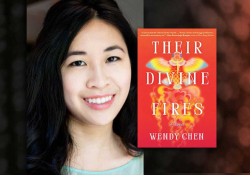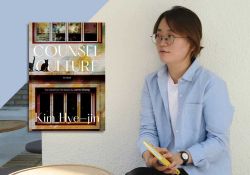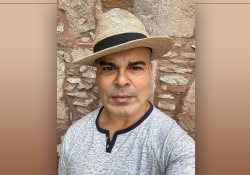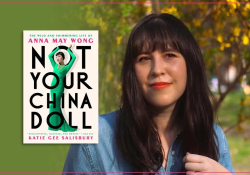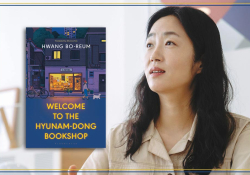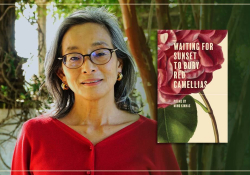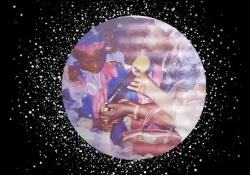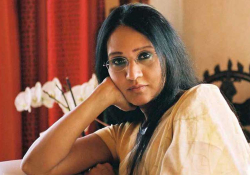New Windows into the Iranian American Experience: An Interview with Anita Amirrezvani & Persis Karim
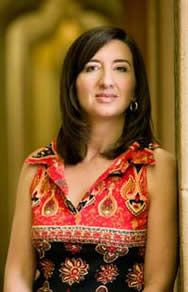

Perhaps best known to the American public for the memoir genre, Iranian American literature has expanded considerably since the late twentieth century. Noting a trend away from memoir, poet and professor Persis Karim has worked to showcase a wide variety of new forms in Iranian and Iranian American literature. Since she co-edited A World Between in 1999, she’s edited two more anthologies. Most recently, she and novelist Anita Amirrezvani co-edited Tremors, an anthology of short fiction that, in their words, “opens a window to Iran and Iranian Americans” in today’s cultural atmosphere.
As the notion and possibility of “national literatures” is examined both in the academy and in print culture at large, Karim and Amirrezvani bring together writers, texts, and perspectives that amplify the idea that American literature is world literature. As a category, world literature describes global or multinational literatures. But it can also be a literary-political strategy in its ability to make new worlds. As you’ll see below, the fiction collected in this anthology adds striking nuance to the project begun years ago with the memoir, working toward what Karim sees as “a need for fictional mastery over the narrative of the Iranian American experience.”
Sara Wilson: Anita and Persis, both of you are well-known authors who also have a notable presence in Iranian American culture. How did you decide to collaborate on Tremors?
Anita Amirrezvani & Persis Karim: Before we knew each other, Anita was working as an arts journalist at a San Francisco Bay Area newspaper. She received word about Persis’s first anthology, A World Between: Poems, Short Stories, and Essays by Iranian Americans. Recognizing the significance of a body of work that documented the early literary efforts of this community, she decided to interview Persis about it. The article was published in 1999. Anita had already started work on her first novel, The Blood of Flowers, but as it was still a fledgling project, she was encouraged and inspired by the anthology to learn of the growing body of literature by Iranian Americans.
After Persis produced her second anthology, Let Me Tell You Where I've Been, she began to notice a shift away from the genre of memoir, which had dominated the early twenty-first century, in favor of fiction. As we became friends with a shared literary interest in Iran and Iranians, we began to recognize that it was time to investigate this trend. We weren’t sure what we’d find, but we were gratified to learn that our hunch was right. Iranian Americans were indeed producing fiction in greater numbers and having greater successes than before, but much of the work we uncovered was under the radar, published in fairly small literary journals that would not necessarily have been noticed by the mainstream literary establishment.
SW: Persis, how has your experience editing Tremors differed from the experience of editing Let Me Tell You Where I’ve Been?
PK: First of all, I had to recognize that we were talking about a leap from memoir to fiction and that these fictional stories offered something different than both poetry and memoir—as if they were the long-subdued stories buried inside this community. The writers who offered us their work were speaking a new language, a language of character and scene, place and no place, the stories and people that Iranians left behind after the revolution and those that were created in the experience of diaspora. I needed to read them differently—they might not have the same urgency as a memoir or a poem, and therefore their nuance and subtlety required a different attention as an editor. The writing in this collection reflects a new sensibility, perhaps even a new generation of voices and a new language. I felt empowered to make these selections because I had the collaboration of my co-editor, an accomplished and thoughtful novelist whose own work speaks to the buried stories that have until now not been told or read by English-speaking readers.
SW: What do these anthologies—and here I’m referring both to Tremors and to Persis’s first anthology, Let Me Tell You Where I’ve Been—contribute to the genre of Iranian American literature?
AA & PK: They open the door; they put the writing on the map for the first time. They help inspire new writers, introduce more established writers to mainstream readers, and suggest a view of Iranian Americans and Iran that is much more diverse than is found in the mainstream media. The anthologies also open new space for serious consideration of Iranian American writing as a new and important form of American literature. They put Iranian American literature in a global context, as does Indian American literature, which deals in part with the movements of a group of people around the globe. Iranians did not make their lives outside of Iran in great numbers until after the 1979 revolution, with the result that literature by Iranians is now springing up around the world in numerous languages.
SW: American literature has always had a conflicted history. Since its post–World War II arrival in the academy, it’s been seen as part of or complicit with the cluster of ideas and myths known as American exceptionalism. Where do you think Iranian American literature fits in relation to an American canon?
AA & PK: We see it as part of a literature deeply influenced by American post–World War II and Cold War foreign policy. Like other literatures that have emerged in the US context after the 1950s, Iranian American literature is shadowed by important historical and political events that are impossible to ignore. Like Vietnamese and Cuban American literature and, more recently, Iraqi and Afghan American literature, the narratives (whether poetry, fiction, or nonfiction) are governed by a need to redress misperceptions and injustices as well as to offer a representation that is based on the experiences of people within those communities. For many Iranian American writers, the experience of Iran’s relationship with the US, or lack thereof, has been a dominant theme of this literary impulse. Many of us have felt that to represent ourselves, to own our stories and name our experiences, whether beautiful or ugly, is to own and represent ourselves against a landscape of representation that too often has only been identified with the conflict between Iran and the US or, worse, with headlines that capture the rhetoric of governments in a state of constant standoff. Iranian American literature in its newness is moving toward correcting some of these misrepresentations as well as moving beyond this need. It’s an exciting time to witness this writing and these writers exploring new ground.
SW: In light of the ways that immigration literature is changing the American canon, how might Iranian American literature complicate and enrich an understanding of what American literature is, what questions it asks, what attitudes it holds?
AA & PK: It complicates it by asking the question—“What is it to be an American in the twenty-first century?”—at a time when we are much more connected to people and places that are far away; and yet, still, we are psychologically disconnected by a foreign policy with a post-9/11 view of the world. How is it that, for example, millions of people around the world could be outraged by the murder of Neda Soltani in the protests following the contested 2009 presidential election in Iran (a subject that is movingly treated in an excerpt in our anthology from the graphic novel Zahra’s Paradise by the authors Amir and Khalil) and, at the same time, Americans can be so easily lulled into the idea that the only solution for our troubles with Iran is military action against the country—when, ten years after the invasion of Iraq, we know what tragic and expensive consequences war has for both nations? In the current rhetoric that is continually shaped and reshaped by the pundits in Washington and Tehran, we have to look elsewhere for the human story and for the wisdom to rethink who we are as Americans. Our best hope is that a collection such as Tremors puts such contradictory attitudes on the table and generates a much-needed and human conversation about who we are and what our relationships are to others.
SW: Is there a “real” Iranian literature? Should distinctions be made between Iranian and Iranian American authors and texts?
AA & PK: To put it bluntly, there is no “real” literature—it is all contingent on who is writing, who is speaking for, and who is articulating an “Iranian experience.” We’d like to think that what we’re doing is subjecting the category of Iranian literature to its very real circumstance in the world, but we’re also mindful of the conditions of the writer in a place like Iran. The fact that every book in Iran has to go through a government agency and receive a seal of approval from a board of censors before it can be published means that Iranian writers are operating under conditions of censorship that effectively ban certain kinds of political and sexual content. We made a decision to focus our collection solely on Iranian American writers who are writing in English because we feel there is an enormous difference in the problems faced by each group. In the long run, our goals are not to capture a monolithic, homogeneous Iranian voice but to show how the culture of Iran is manifest in new ways, new contexts, and new literary landscapes that are both interesting and powerful.
SW: Should “The Iranian Memoir” be considered a monolithic genre? Do you believe it will or has achieved status as a genre unto itself?
AA & PK: No, the Iranian memoir, if anything, should be considered a particular manifestation of a moment in the history of publishing in the West. Like the memoir genre itself, it reflects a craving for a certain “truth” and, in the case of Iranian memoir—which by the way is a category almost completely dominated by women writers of the Iranian diaspora—it suggests a desire on the part of publishers and the reading audience to have something revealed. While we don’t want to diminish the importance of the Iranian memoir as a particular utterance that is necessary in the development of any literature, ethnic or otherwise, we think it would be too easy to call it a genre or say that it is monolithic.
Memoirs are reflective of individual lives, and when Anglo-American writers write a memoir, we don’t call it an “Anglo-American memoir,” so why should we do the same with Iran? Instead, we might consider how the hunger for information, particularly for information about everyday Iranian experiences, women’s experiences, the experiences of resistance and exile, are part of what has driven publishers to emphasize these memoirs over other forms of writing. Although it is now a tired old cliché, I think the idea of “rending the veil” of Iranian women has been part of the impulse of publishing these memoirs. Publishers and the “market” for ethnic literature have often looked for an image of the ethnic “other” to be portrayed a certain way—that is, Iranian women’s oppressive conditions vis-à-vis an Iranian male patriarchal order. Several of the authors in our collection have noted that they could not get their work published because they were told either by an agent or a publisher that the market for Iranian women’s memoir was saturated. I also think the criticism of Iranian memoirs perhaps has been too harsh—assuming these writers to be complicit with US foreign policy at times seems a stretch. Instead, we should be asking, What isn’t available to readers? Why is it so necessary to write memoirs in order to see a truth about a culture or place?
SW: A main character of the anthology’s title piece, “Tremors,” by Erika Abrahamian, is an elderly male who wears sunglasses in an attempt to shield himself from the “many eyes” of his family in his home in Los Angeles. Could this anthology be considered a sort of “rending the veil” of Iranian men’s lives?
AA & PK: Absolutely. We believe that the view of Iranian men in our anthology is much more nuanced than you will find elsewhere, especially given that orientalist stereotypes about the aggressively oversexed, patriarchal, and violent Middle Eastern male are still so dominant in the Western world. (One example is found in the Hollywood blockbuster film 300, which celebrated Greco-Spartan warrior values while portraying their Iranian male opponents as vile in every possible way and, by extension, privileged the entire sociocultural landscape of the Western world over that of the “corrupt” Eastern world.) Although a minority of the writers in our anthology are men—six out of twenty-seven—it goes without saying that they represent the Iranian male experience in a thoughtful way, as do the women writers. We are certain that more Iranian American male fiction writers will emerge in coming years to complicate this rich landscape even further.
One of the writers in our anthology recently relayed that she’d had so much trouble getting a book contract because her novel portrays a mother-daughter relationship and an extremely loving Iranian father. She was asked by an interested publisher, via her agent, to change some of the characters so that they’d conform to a view of Iranian men as oppressive, domineering, and violent. She refused and said that that would not be her story. As a result, she had to shop the novel for an additional two years in order to find a publisher. This is just one of many examples in which publishers and agents have an expectation about how Iranian men, and narratives about Iran, in general, should reflect some of our own media stereotypes. Our mission is to break that and to reflect more layers about Iran and Iranian culture—to show how rich, diverse, and complex the encounter between Iran and America truly is.
SW: How might the work compiled in Tremors be reshaping expectations of Iranian American literature in this anthology, which borrows its title from this piece?
AA & PK: “Tremors,” like the other stories, really invokes the idea that Iran has many perspectives—inside and outside, resistant and complicit—there is no uniform view of Iran or of what it is to be Iranian American. The only expectation we hold is that readers will glean much more from fiction than perhaps other media—like movies and television—have made available.
SW: Mourning and loss characterize much Iranian American literature, arguably stemming from the fact that so much of its subject matter is grounded in contexts of war and violence. What is the role of loss in Iranian American writing? Is loss endemic to this genre of literature?
AA & PK: It is impossible to look at any of the writing that has come from the Iranian American experience over the past three decades and not see evidence of loss, war, exile, and displacement for good reason—there was a US-backed coup d’état in 1953 that many Americans don’t realize instigated a whole series of historical events both inside and outside Iran that helped define Iran’s twentieth-century history. From that has sprung the internal violence of the Shah’s rule, then the revolution of 1979, and then the subsequent eight-year Iran-Iraq War that resulted in hundreds of thousands of deaths and over a million people wounded, and finally the 2009 protests against the current government. How does one avoid that complicated story? In fiction by Iranian Americans, an attempt to understand loss and displacement is inevitable. However, there are also the losses associated with migration and exile—the ways that Iranian Americans have had to piece together their lives after this series of historical ruptures. Iranians, like so many others who’ve undergone war and political struggle, understand how those losses have shaped them. It’s also part of their humanity, their ability to see the costs of what is taking shape in the Middle East today. An entire section of our anthology is devoted to work by Iranian American writers that is not about Iran at all but is fascinating because many of their stories focus on other, non-Iranian communities that have also been war-torn or marginalized.
SW: If you had to summarize the view of Iranian culture portrayed by media and often affirmed by American culture, what would this view be?
AA & PK: It is a headlines-only view. It’s important to remember that in the 1970s when the US and Iran had friendly relations, there were tens of thousands of Americans working in Iran and tens of thousands of Iranians studying in the US. The result was a much deeper understanding of each other made possible through ordinary human interactions: marriages, children, family connections, business dealings, tourism, and so forth. Now the people in our two countries don’t know one another on a human level, which makes it all too easy to demonize each other. The view held in the media and by many politicians eager to “deal” with Iran is one that is largely absent of a human connection and an appreciation of Iran’s rich culture, its warmth and rituals, and certainly of the resilience of its people.
SW: How do you see Tremors commenting on that “headlines-only” view?
AA & PK: As always, the human encounter made available in literature offers a window. That’s what we’d like Tremors to do—to open a window to Iran and Iranian Americans.
SW: Some have characterized A World Between as an anthology that deals with healing, while Let Me Tell You Where I’ve Been has been hailed as a more politicized anthology. Tremors seems characterized by expectation, even hope. To what extent were these works affected by the cultural and political contexts in which they were published? How would you situate Tremors in the current cultural and political atmosphere?
PK: The first anthology, A World Between, was very much a response to the urgency of not being erased, of having a way to reconcile all the losses that resulted from the rupture of revolution, the loss of exile and displacement, the sorrow of war. Its textual and narrative strength was less about the writing and more about the telling, the absolute necessity of speaking after a long, painful silence in which people found themselves vilified both in Iran and in the US. Let Me Tell You Where I’ve Been has an element of confrontation with the last decade of the twentieth century—all those ways in which women have found themselves caught in between cultures, stories, the way that an event like 9/11 created both a necessity for correcting misperceptions and also the confidence of women in general. I’m so proud of the work I’ve done on both of those earlier anthologies, and, in a way, they have strengthened the confidence of all Iranian American writers. I am guessing that the politicization you’re referring to also refers to the way that Iranians, like Arabs, have felt shut out at times. I like to think that women’s voices have created new openings, new visions for what is possible in writing.
Finally, I think Tremors is most urgently about the need to offer fictional mastery over the narrative of the Iranian American experience. The writing in this collection is very good both in its stylistic and narrative point of view, suggesting the growth and maturation of Iranian fiction writers in English in the thirty-four years since the Iranian revolution and resulting diaspora. In addition, since Iran has many ethnic and religious groups, the writers in the book offer multiple perspectives, whether Jewish, Muslim, Bahai, or other religious backgrounds and points of view. That in itself offers an important window onto Iran’s multiculturalism. But even today, it’s the small literary journals and university presses, like the University of Arkansas Press, that have been interested in harnessing this work because they are less beholden to the idea of the profit margin and much more interested in the intellectual enterprise of introducing new writers and new ways of thinking to the American public.
SW: Iranian American literature is rich and distinctive in its ability to depict how identity is shaped through recursive imagining and revising within concrete cultural and political contexts. What can Iranian American literature and culture teach the larger American culture about the reshaping of identity in response to change?
AA and PK: It’s not a static endeavor. Every generation, as it becomes more confident and competent, retells its story. The Iranians who were raised in Iran before the revolution and who arrived here as adults provide one aspect of this story, whereas the Iranians who were born and/or raised here, and who may never have been to Iran, inevitably will offer a different view. Yet there is still so much to tell, so many narratives that have yet to make their way onto the page. It’s impossible to predict where it will go—what we know is that the ability of some of these writers to capture those untold stories is an exciting prospect, not just for American literature, but for global literature. Imagine how much richer it could be if Iranians and Americans had more exchanges, more encounters? Our best hope is that the stylistic mastery and the narrative risks these writers take will only grow larger and find new voices in the future.
March 2013
